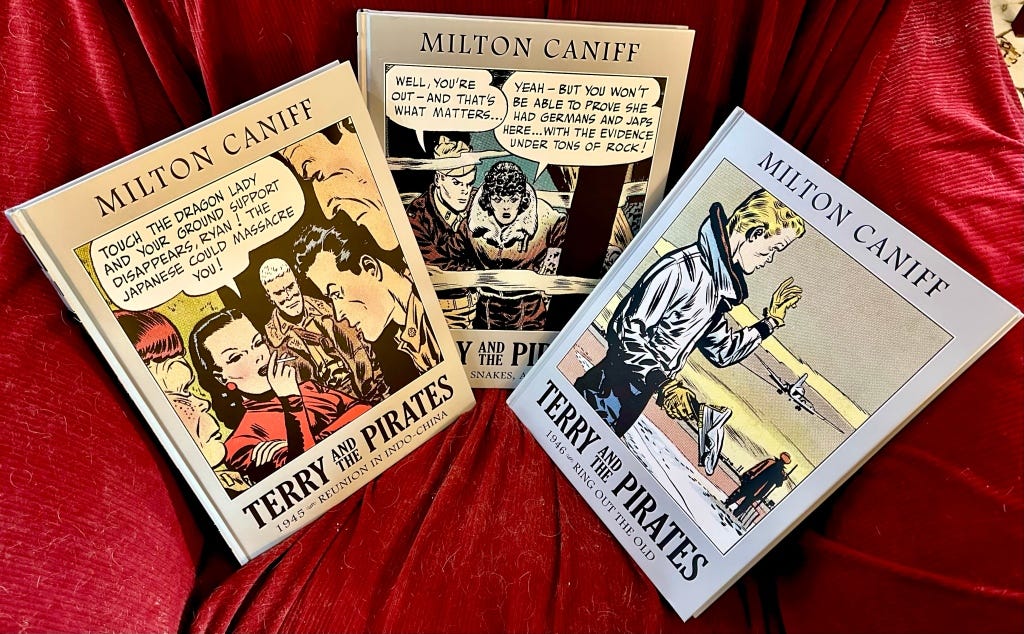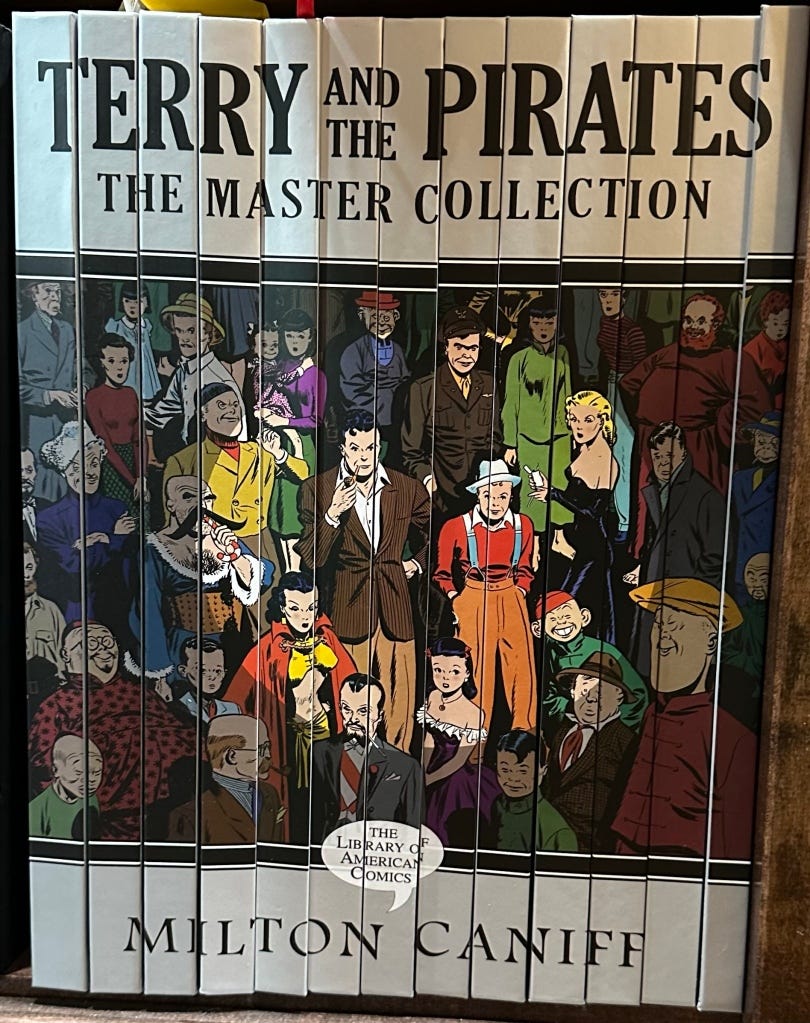The Maturing of Milton Caniff
Milton Caniff’s landmark adventure Terry and the Pirates has been among the most reprinted newspaper strips of all time…and deservedly so. The artist’s fame for establishing the tone, cadence, composition and dramaturgy of the mid-century adventure genre in comics is well known. I won’t rehash it here. The latest and most ambitious reprint Terry project concluded this week when Clover Press and the Library of American Comics shipped the final three volumes in the 13 book Terry and the Pirates: The Master Collection. As I said in my initial review of the first volumes, the series is magnificent, if you don’t mind juggling oversized tomes. The sourcing of best available art, coloration and overall reproduction are the best I have seen among the many renderings of Terry over the years. This is LOAC’s second go at the strip. The imprint was launched two decades ago with a 6-volume oblong set. The first 12 volumes of the Master Collection reprint the full run from inception in 1934 through Caniff’s exit in 1946. A thirteenth volume carries new commentary, ancillary art and all of the front matter from the earlier series. Kudos to LOAC and Clover. Unlike many comic strip reprint projects that lumber for years, or peter out in mid-run, this one only took three years to complete. This final tranch of volumes also comes with a packed in bit of extra art (see above. Most of the set is available at Amazon, or directly from Clover.
To mark the completion of this wonderful tribute to Caniff’s talent and dedication to the field, let me resurface a few of my older takes on the master. In one I look at Caniff’s attempts to bring some psychological depth to the medium. In another I admire his mastery of light eroticism – cheese and beefcake.
Personally, I like to see Caniff as a master absorber of popular culture. He was bringing into the comic strip aesthetic strengths of other popular media. He borrowed from the adventure pulp magazines the globe-trotting adventurism and exoticism of Doc Savage and Fu Manchu as well as the femme fatales and colorful villainy of crime pulps. Under the influence of his pal and studio mate Noel Sickles, he quickly moved from nondescript line art to full on expressionist chiaroscuro lighting. And his absorption of 20s/30s film editing style gave the newspaper strip a cadence that carried real emotional weight. Caniff, born in 1907, was in a generation of comic artists raised on modern mass media. In fact, as a kid he appeared often as silent film extra and even considered an acting career. In many ways, Terry and the Pirates helped bring newspaper comics more firmly into the mainstream of media genres.






